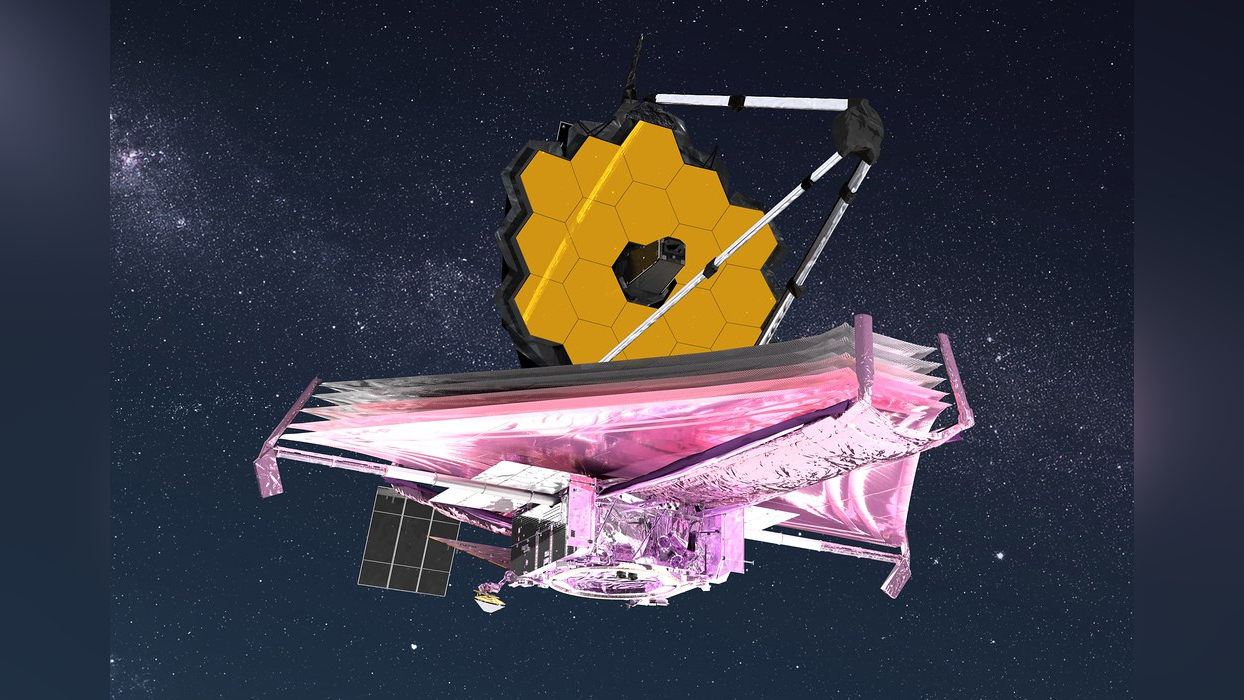What is the Fermi Paradox?
The Fermi Paradox asks "Where is everybody?"

The Fermi Paradox refers to the dichotomy between the high probability that extraterrestrial intelligence exists and the fact that we have no evidence for such aliens.
This paradox was described by the late British science-fiction author, Sir Arthur C. Clarke, who said: "Two possibilities exist: Either we are alone in the universe or we are not. Both are equally terrifying."
Many experts since have grappled with the same question. Why, considering the multitude of planets and stars in the Milky Way, have we not heard from anyone?We call this problem the Fermi Paradox, and there are a number of possible solutions — some more unnerving than others …
Related: Roswell UFO crash: What is the truth behind the 'flying saucer' incident?
What is the Fermi Paradox?
The Fermi Paradox is a problem that asks, where are all the aliens in the universe? If life is so abundant, why haven't we been visited by, or heard from, anyone else?
According to NASA, in just the last two decades we have found more than 4,000 planets beyond our solar system, with trillions of stars thought to exist in our galaxy — most of which host their own planets.
Considering life sprang up on Earth, would we not have expected it to start in at least one other location in the last 14 billion years of the universe?
Who came up with the Fermi Paradox?

The Fermi Paradox was devised by the Italian-American physicist Enrico Fermi, according to the Planetary Society. He is said to have come up with the idea in a throwaway remark over lunch with colleagues in 1950 when he asked "Where is everybody?"
He wondered, given that our planet was relatively young compared to the universe, we might have expected someone to have visited us by now — but we had no evidence of that ever occurring.
Fermi died four years later, in 1954, so did not have long to ponder the question. But his idea has sparked whole fields of science hoping to solve the problem, including the search for extraterrestrial intelligence (SETI).
What are the solutions to the Fermi Paradox?

There are a number of solutions to the Fermi Paradox. The most obvious, and likely, is that we simply haven't looked hard enough to find other life, and interstellar travel between stars is difficult.
The first planets beyond our own solar system were only discovered in the 1990s. This means we have barely started to scratch the surface of studying other worlds.
For example, we are yet to find many planets that look exactly like Earth, orbiting stars like our sun — but upcoming telescopes are hoped to be capable of such detections in the coming decade or two.
Even then, the distances between star systems are enormous, making journeys between them difficult. Our closest star system for example, Alpha Centauri, is four light-years away. The distance from Earth to Neptune, for comparison, is 0.0005 light-years — a journey that would still take us decades with current technology.
Intelligent aliens might simply have decided to never visit us, or did so long ago without leaving any trace.
Alternatively, it might be that life is simply so rare that the chances of two intelligent species being positioned relatively near each other in the vastness of space is exceedingly slim.
A more somber suggestion is that we are alone in the universe. Life, like that found on Earth, is simply so vanishingly unlikely to arise, that ours was the only world where this happened.
Most scientists think this is unlikely. But there is the possibility that some sort of event, known as a Great Filter, might prevent civilizations like our own from progressing far enough to make contact elsewhere.
What is the Great Filter?
The Great Filter is the idea that catastrophic events, either manmade or natural, cause intelligent life to be extinguished on habitable worlds before they have a chance to extend their reach into the universe.
These events could be one of many things. They might be powerful solar flares, climate change, asteroid impacts, or perhaps something of the planet's own doing like a nuclear apocalypse.
If this idea is correct, it's not clear if we have already passed this filter — or we are yet to reach it …
What is the Drake equation?
The Drake equation is an idea, proposed by the American astronomer Frank Drake in 1961, that the number of potential civilizations in the universe can be calculated if we know a few key variables.
The formula for the Drake equation is:
N = R* x 𝑓p x ne x 𝑓1 x 𝑓i x 𝑓c x L
R* = average rate of star formation in Milky Way
𝑓p = fraction of stars supporting planets
ne = average number of planets that could potentially support life for each star that hosts planets
𝑓1 = fraction of those planets that "could" support life that actually develop life
𝑓i = fraction of planets that develop intelligent life, and thus intelligent civilizations
𝑓c = fraction of those civilizations that develop a technology to communicate their existence
L = length of time over which these civilizations send those detectable signals into space
By including all of these factors in the equation, the idea is you might be able to work out how many other intelligent civilizations exist in the universe.
This "simple" formula, Drake once said, would be akin to estimating the number of students at a university by multiplying the number of new students entering each year by the average number of years a student will spend at a university, according to SETI.
As of yet, however, a number of key variables in the equation remain unknown, meaning we can't yet come up with a possible number for other species of intelligent life.
Can we solve the Fermi Paradox?

Many scientists hope that we can solve the Fermi Paradox. Upcoming telescopes, like NASA's James Webb Space Telescope launching in December 2021, will be able to study the atmospheres of exoplanets like never before, while the search for new planets is continuing unabated.
By finding more planets in habitable zones around their stars, where temperatures are just right for liquid water to exist, scientists could narrow down the possibility of other Earth-like worlds in the universe — and, by using advanced telescopes, study some of these Earth-like orbs in our galaxy.
Ultimately, scientists simply need more data in order to truly understand the Fermi Paradox. But if it turns out that habitable planets are common, and astronomers are still yet to hear from anyone, then it might suggest intelligent life such as that on Earth is rare.
Are we alone in the universe?
We don't know if we are alone in the universe, but scientists hope to answer this question in the coming years.
Ongoing missions, like NASA's Perseverance rover on Mars, could give us vital clues. Perseverance is collecting samples that will be returned to Earth in the 2030s and could contain signs of past or present life on Mars.
If we can discover even simple life on Mars or another location, like an icy moon of Jupiter or Saturn such as Europa and Enceladus, that would be proof that life had sprung up in at least two locations — Earth and this other world.
In that instance, it would suggest life is not just limited to our own planet. With that, it would raise the prospect that other intelligent life, like us, might well exist in our galaxy and beyond.
Additional resources
- Learn more about the Fermi Paradox with the SETI Institute.
- Revisit the Drake equation with this article on NASA's exoplanet webpage.
- Watch this informative video from the Royal Institution on why we are yet to discover aliens.
Sign up for the Live Science daily newsletter now
Get the world’s most fascinating discoveries delivered straight to your inbox.

Jonathan O’Callaghan is a freelance space and science journalist based in the UK. He specialises in covering commercial spaceflight, space exploration and astrophysics, but also reports across a wide range of science, from CRISPR to climate change. Jonathan’s work has featured in Scientific American, Nature, New Scientist, The New York Times, Quanta, Forbes, Wired, and a variety of other publications. He has also made TV and radio appearances as a space expert for the BBC and other organisations.










